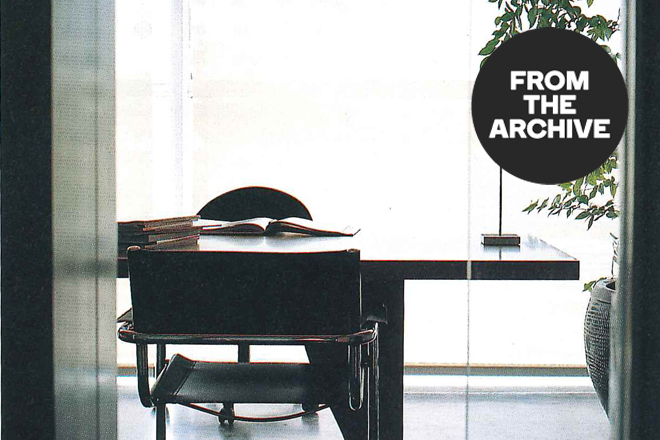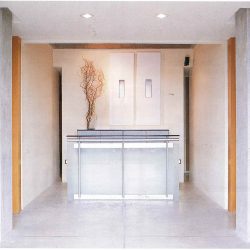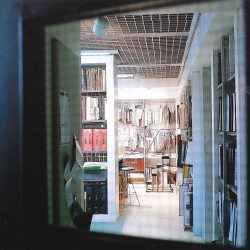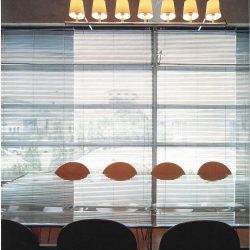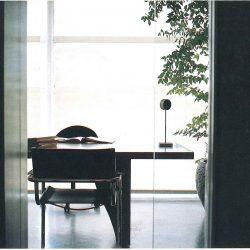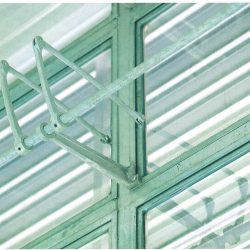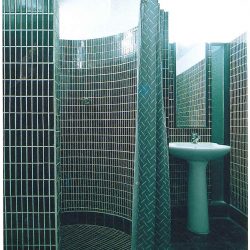WHAT DOES THE DESIGN OF ONE’S OWN OFFICE SPACE BRING WITH IT? FOR PONGTHEP SAKULKU OF AUGUST DESIGN CONSULTANT, IT’S AN OPPORTUNITY TO EXPERIMENT WITH THOSE UNFAMILIAR MATERIALS, FITTINGS, AND DETAILS THAT THE CLIENT OFTEN REJECTS.
Whenever architects or designers have free reign to work on their own ideas without being constricted by business or marketing interests we are eager to see the results. In such happy circumstances designers can walk through the whole process, from the initial concept to details. This is just such the case with the new office of August Design Consultant, an interior design studio.
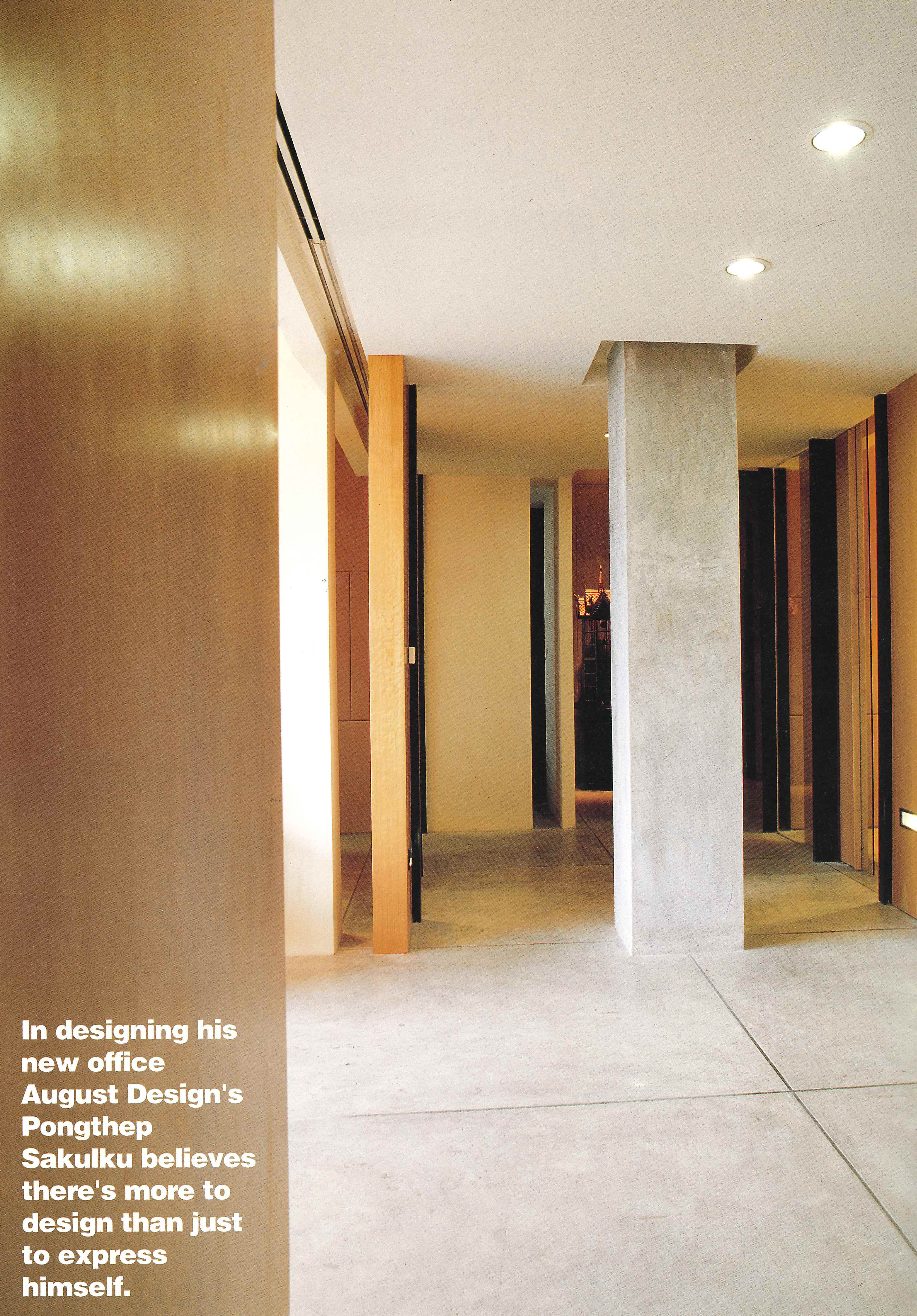
“Actually most of our commissioned works like houses or hotels are run-of-the mill mainstream stuff, But for our own office we can ponder our creative impulses,” says Pongthep Sakulku, the company’s owner and design director who first rented 250 sq. meters in an office building on Rama IX Road and now has built their own office on Soi Lad Phrao 77/1.
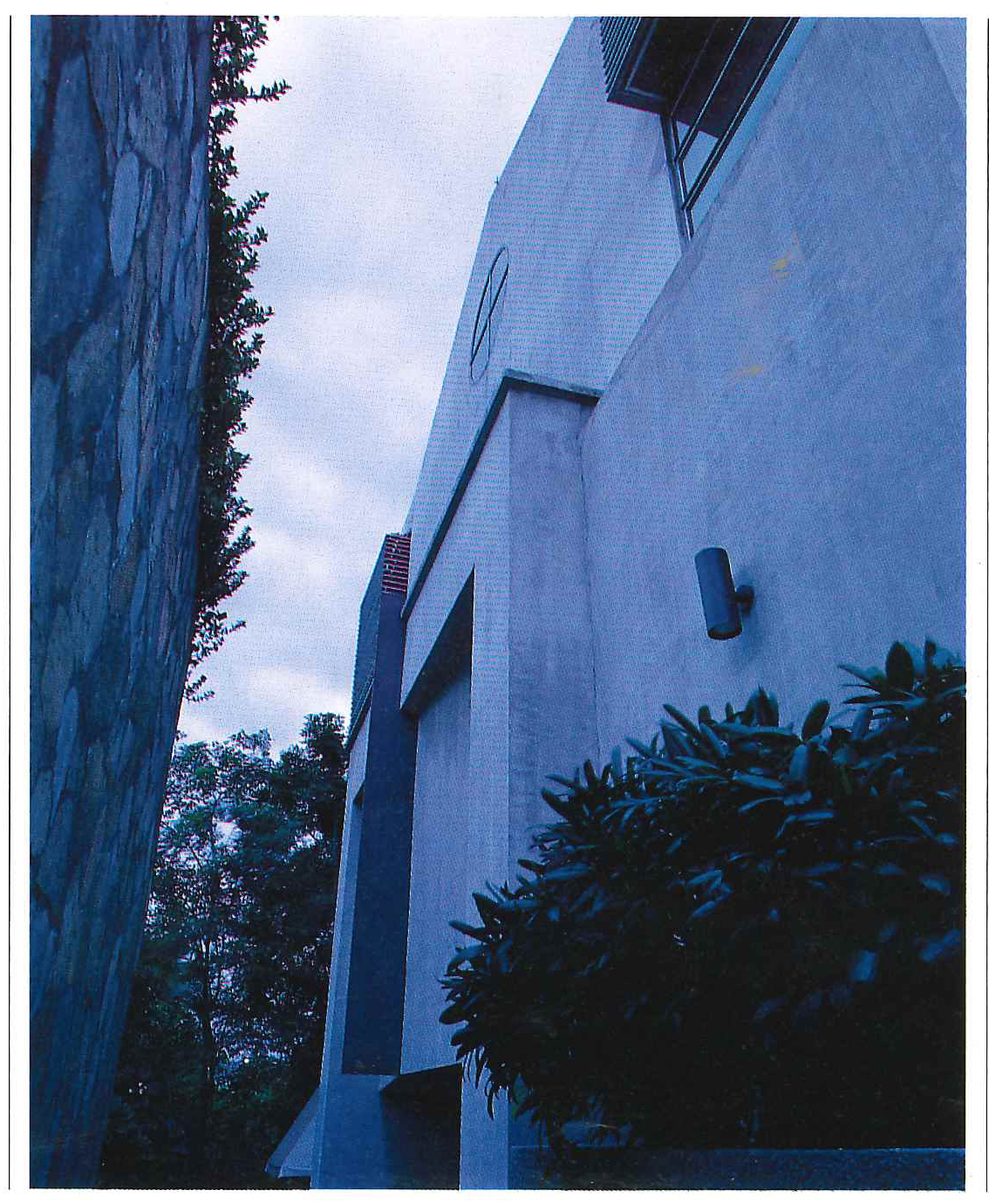
Originally published in art4d July, 1995
The new office of August Design Consultant is a single 4-storey building of almost a 500-sq-meter office space. The parking area is underneath the building on the ground level. Walking upstairs to the 2nd floor is the reception lobby and the administration office. The third floor is a double-height studio space for designers. The top floor is a huge attic for a furniture extension, which is now serving various office activities. The whole three floors are vertically linked by the steel-structure staircase covered by a huge gable tent-structure, recalling the famous ‘house within a house’ in O.M. Ungers’ design for the German Museum of Architecture.
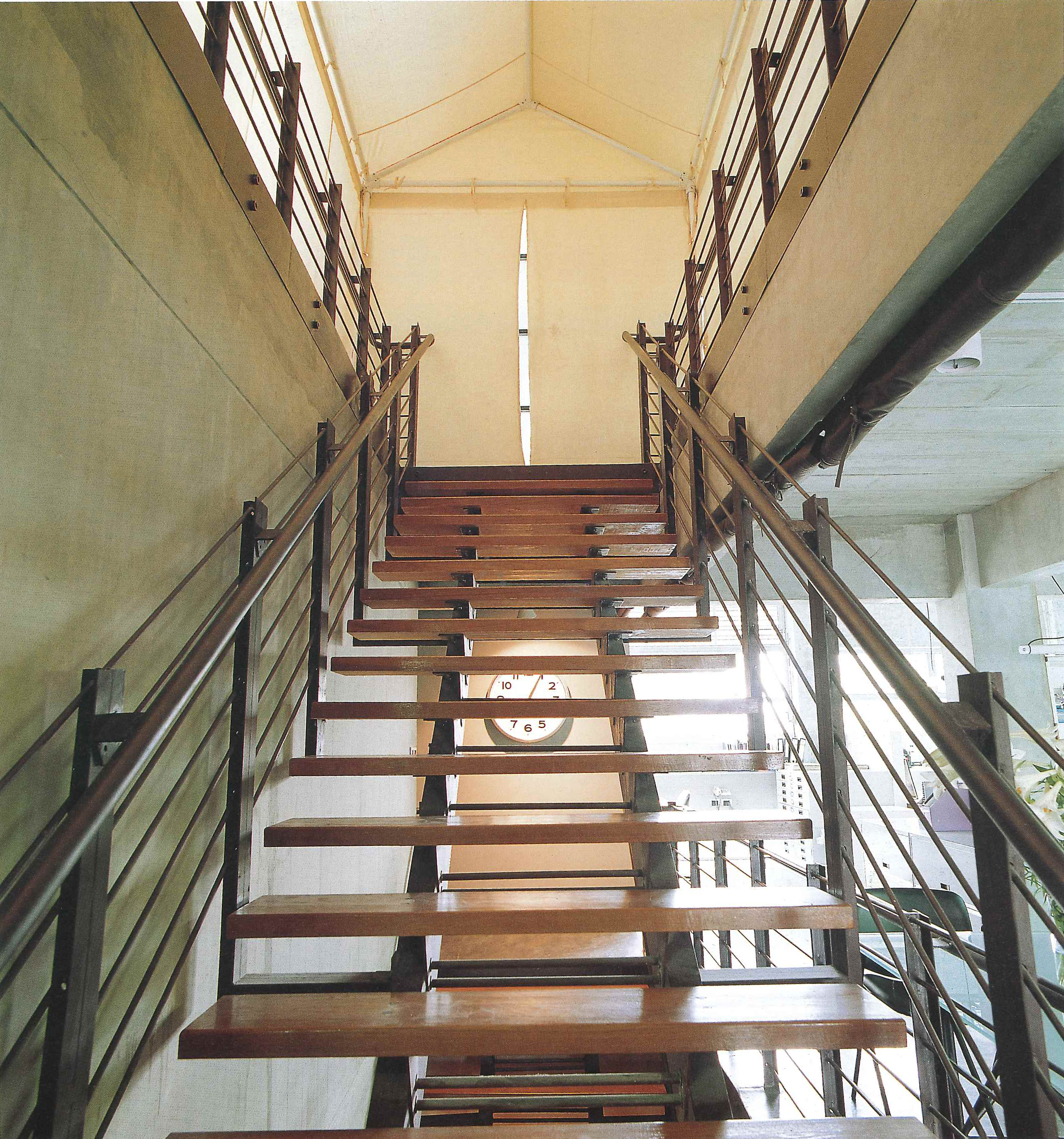
Originally published in art4d July, 1995
Here in their own new office, August Design Consultant’s approach is to create new architectural space through the open plan, scale and proportion. Rooms are defined by ‘skins’ which are designed to separate from the building structure. The main building materials such as concrete, wood, steel and glass are exposed. Architectural details are designed rather to express an architectonic effect than to be a decorative one. The conception of 3-dimensional elements to detail design is entirely the process of interior architecture.
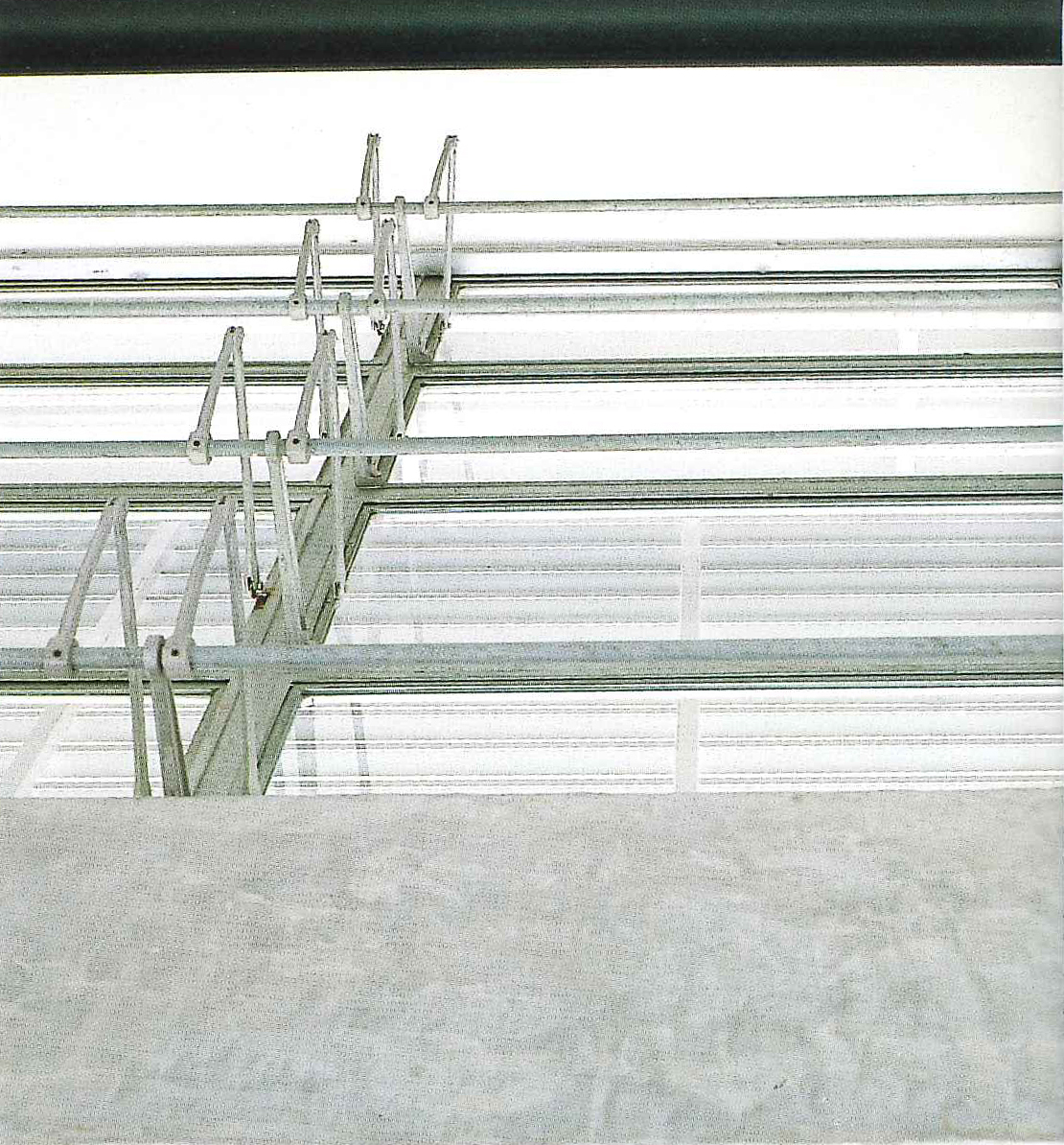
Originally published in art4d July, 1995
For Pongthep, this is the opportunity to design in the direction that he likes, to experiment with those unfamiliar materials, fittings, and details that are always rejected by the clients. It is of course a big investment for which many designers dream but are not likely to spend. “I have wanted to design my own office, not just to do the things I love to do, but also to create an environment that I myself and my staff are happy to work in. Above all, to make us all feel like doing good design.”
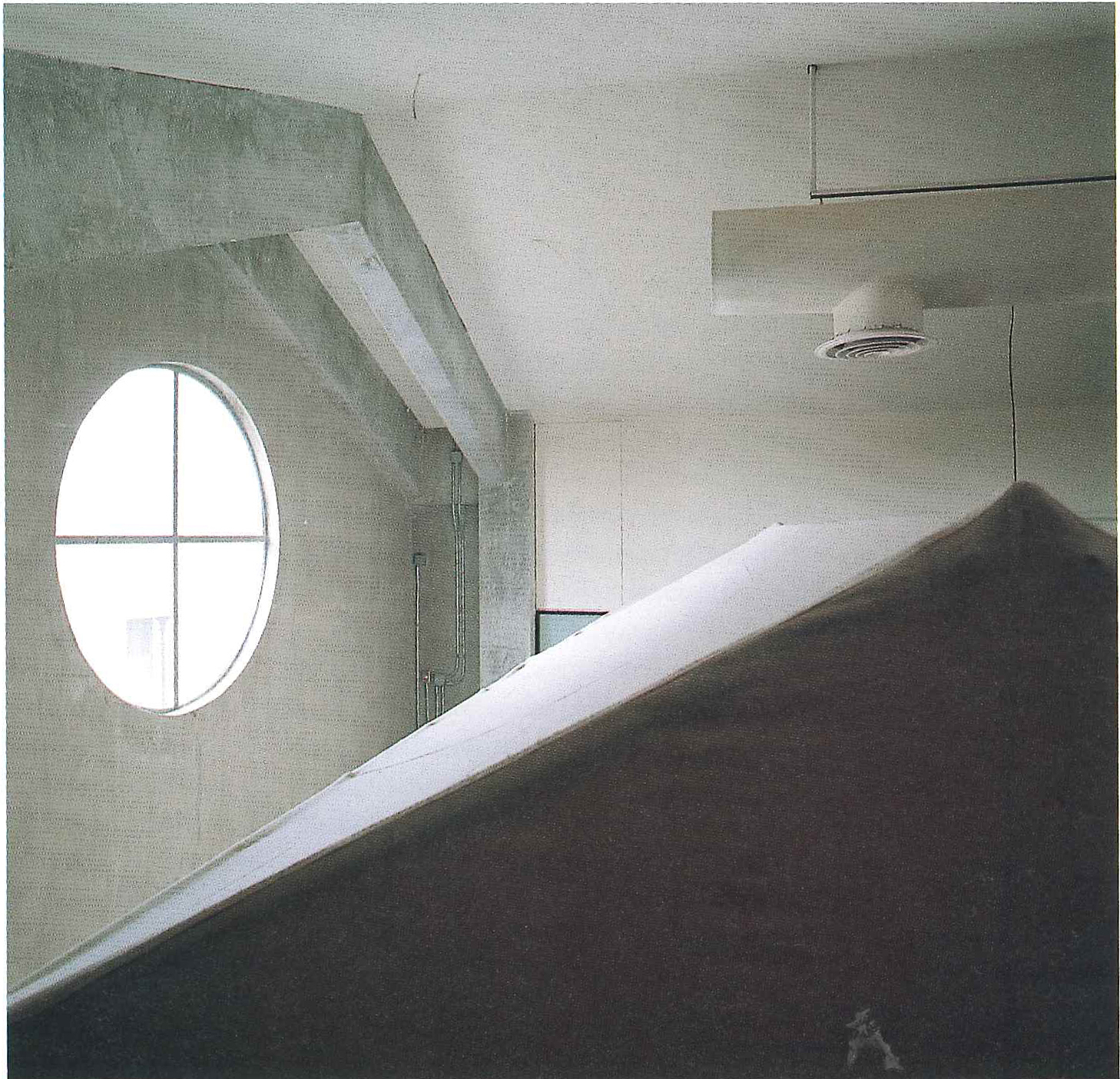
Originally published in art4d July, 1995

